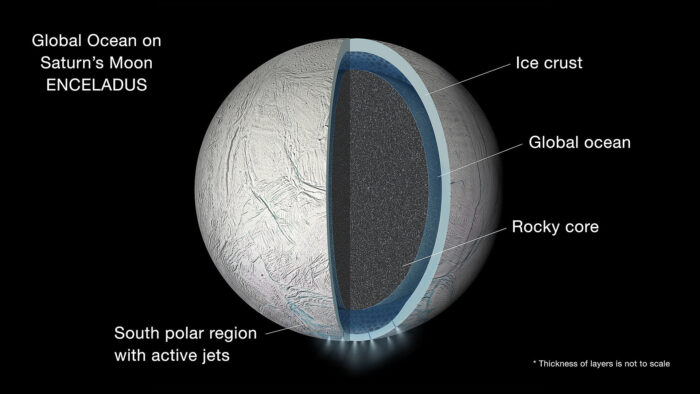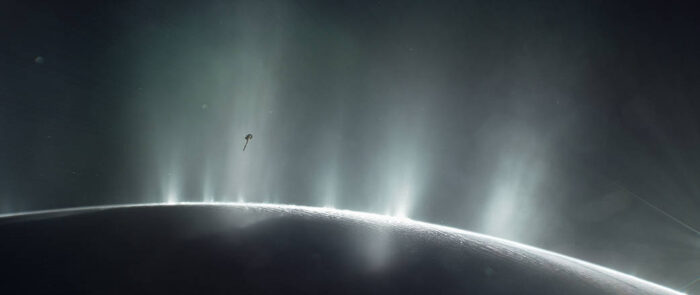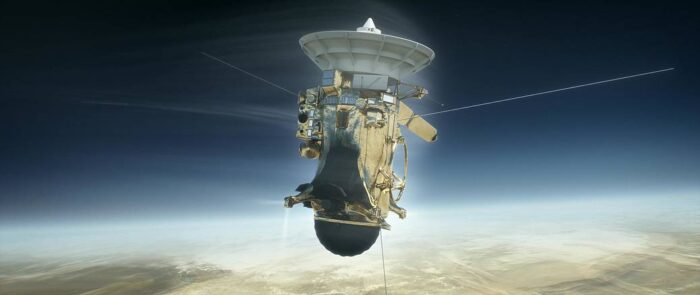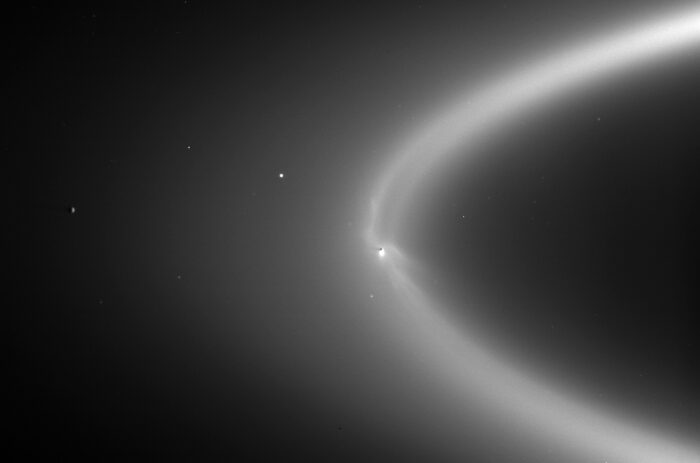A new discovery has astronomers and scientists buzzing.
Thanks to an analysis of data from NASA's Cassini space probe, researchers have found phosphorus in the under-ice ocean on the Saturn's moon Enceladus. Because of this moon-wide ocean, Enceladus has long been considered a place where alien life existed.
The presence of phosphorus—a crucial element for living things—seals the deal even more!
Though Cassini was destroyed at the end of its mission in 2017 (it was purposely crashed into Saturn's surface), the massive amount of data that it collected is still being examined by scientists.
One of the instruments Cassini used to collect data was its Cosmic Dust Analyzer (cool name!). A team of international scientists led by Frank Postberg of the Free University in Berlin examined data on 345 particles from Enceladus examined by Cassini. On nine of them, they found traces of sodium phosphate, a compound that is a combination of sodium (salts) and phosphorus.
This brings up a lot of questions!
What is Enceladus?

An illustration of what scientists believe the interior of Enceladus is made of. (NASA/JPL-CalTech)
The sixth largest moon of Saturn, Enceladus is about one-seventh the size of our Moon and is essentially entirely covered by ice. This makes it one of the most reflective objects in the solar system.
Scientists have also long believed that underneath the icy surface is an ocean that is likely about 10 kilometres (6 miles) deep. This water is kept in a liquid state thanks to heat coming from the moon's core. One of the biggest clues for this? The fact that the south pole of Enceladus has a bunch of ice geysers spraying plumes of water vapour and other gases thousands of miles away from the surface!
How did Cassini get these samples?

An illustration of Cassini collecting samples from the plumes of Cassini in 2015. (NASA/JPL-CalTech)
Sent to investigate Saturn and its moons in 1997, Cassini was not equipped to land anywhere. From the moment it arrived in 2004 to its end in 2017, it used a series of instruments to examine these worlds from a safe distance. That said, it could occasionally get really close to its subject, like the numerous times to dove right alongside Saturn's famous rings.
Then there was Enceladus' famous plumes. Not only did Cassini discover them, it was able fly right into them, directly collecting information about what they were made of. This was easily one of the most important discoveries that the probe made. It put Enceladus near the top of the list of potential places in our solar system where alien life could exist.
Why is phosphorus such a big deal?

An illustration of Cassini as it fell toward the surface of Saturn in 2017. This probe changed our understanding of Saturn and our solar system. (NASA/JPL-CalTech)
Life comes in many shapes and sizes.
For example, life on Earth is estimated to be about 3.7 billion years old. But during almost all of that time, life was microscopic single and multi-cellular organisms. We're talking about the type of life that if it was floating in front of you in a glass of water, you would never know it was there. The first animals are only about 700 million years old, and they, too, were relatively small.
BUT. One thing that all of these lifeforms have in common is a need for phosphorus.
In our own bodies, it is the second-most abundant mineral after calcium. From bones and teeth to cell walls and DNA, phosphorus is essential. We can't live without it, and neither can anything else that we know of.
And Enceladus' ocean is full of the stuff. Not only is this the first time phosphorus has been found in an alien ocean, it has been found in concentrations that are about 100 times stronger than what we have here on Earth.
But just because the stuff is there, doesn't mean that life is. Confirming that will require sending a probe that can actually land on the surface. And though plans are in the works, it is not likely to be launched until the 2030s.
Until then, we'll always have our imaginations!
 Eneeladus is seen passing through one of the rings of Saturn. (NASA)
Eneeladus is seen passing through one of the rings of Saturn. (NASA)









